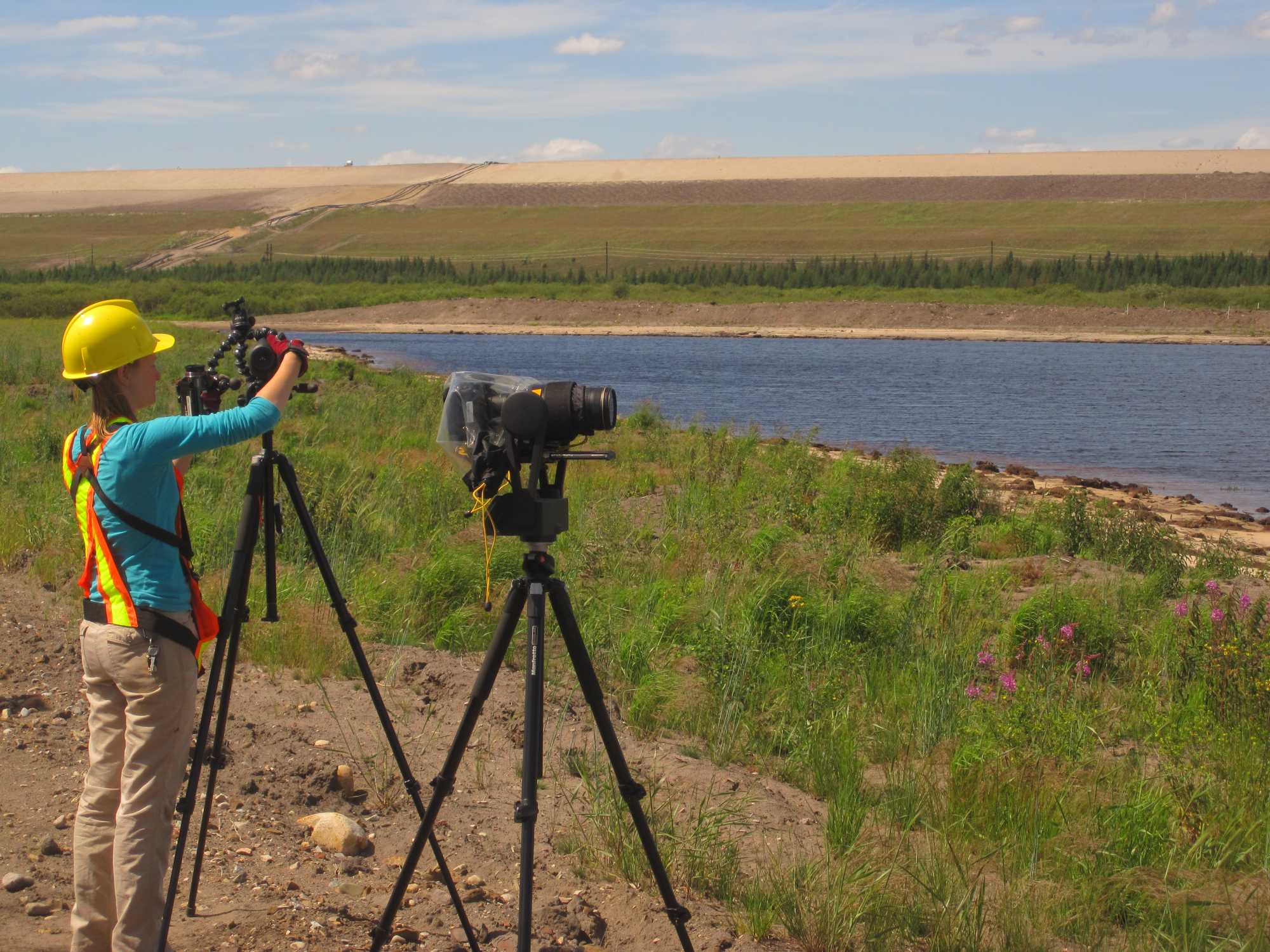Automated Monitoring
M.Sc. Thesis by Sarina Loots
Defended 23 May 2014
1. Evaluation of marine-radar detection of birds at industrial sites
Currently, radar is used to detect approaching birds by all five oil sands operators at one or more sites within their lease hold. Upon detection, the radar software systems deploy bird deterrents. The operators use different commercial systems, each with its own specifications for distinguishing birds from other kinds of targets (e.g., insects) and for determining the paths of individual birds to generate counts.
Methods evaluated involve two identical but independent X-band radar systems, each with a different antenna (parabolic and open array), and the open-source software radR to measure bird detection over large bodies of water.
2. Use of cameras to automate shore-based monitoring of birds on industrial water bodies
Currently, oil sands operators are obliged to have humans observe and count birds at tailings ponds for 30 minutes daily. Operators face logistical restrictions in achieving this task with standardization, especially at crepuscular hours. The purpose of this research was to determine the optimal configuration for, and accuracy of, automated monitoring of birds on water bodies using photography. We explored the potential to use both SLR (single-lens reflex) and HD (high definition) video digital photography to water-associated birds from an automated setup on shore.
This research was funded by Alberta Justice, Imperial Oil, and a National Science and Engineering Research Council (NSERC) Industrial Postgraduate Scholarship with Shell Canada. Work was conducted by Sarina Loots as part of an MSc, with supervisory committee of Dr. Colleen St Clair (direct supervisor, Department of Biological Sciences UA), Dr. Erin Bayne (Department of Biological Sciences UA), and Dr. Hong Zhang (Department of Computer Sciences UA).
